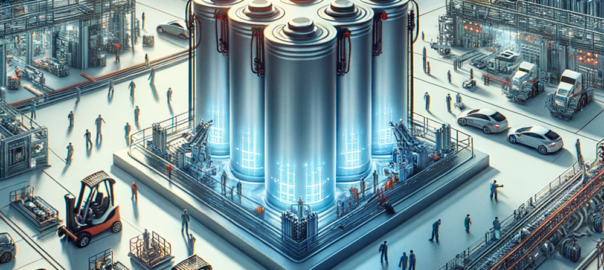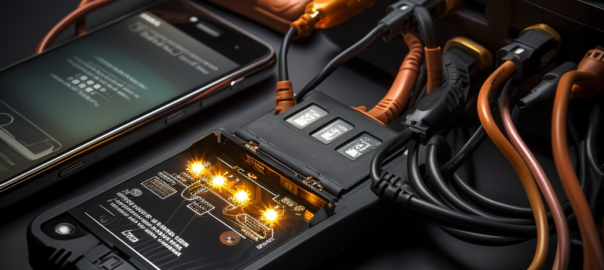The global energy landscape is undergoing a significant transformation. With the increasing pressure to combat climate change, the focus has pivoted towards more sustainable and eco-friendly energy storage systems. Lithium-sulfur (Li-S) batteries, with their high energy density and potential for renewable energy storage, emerge as one of the promising candidates. However, a major stumbling block for Li-S batteries is their short lifespan due to rapid capacity fade. This challenge has ignited the research community’s interest in enhancing the stability of Li-S batteries, and metal nanoclusters have been spotlighted as a promising solution.
Metal nanoclusters, minute in size yet monumental in impact, have displayed the potential to address the instability issues plaguing Li-S batteries. Their unique physicochemical properties bring forth opportunities to stabilize these batteries, thereby increasing their longevity and efficacy. As the demand for reliable and sustainable energy storage grows, understanding the role of metal nanoclusters in boosting the performance of Li-S batteries becomes vital.
In this article, we delve deep into the world of metal nanoclusters, uncovering their properties, their function in Li-S batteries, and the future they might carve for sustainable energy storage solutions.
Contents
What are Metal Nanoclusters?
Metal nanoclusters, often visualized as a bridge between individual metal atoms and larger nanoparticles, are tiny aggregates of metal atoms. Typically, these nanoclusters contain a few to several dozen atoms, exhibiting sizes in the range of 1 to 3 nanometers. Due to this diminutive scale, metal nanoclusters display quantum confinement effects, leading to distinct electronic, optical, and catalytic properties not seen in bulk metals or larger nanoparticles.
For instance, gold, a metal often associated with its signature lustrous yellow hue, can appear red or purple at the nanocluster scale, showcasing its altered optical properties. These novel attributes are due to the specific geometric arrangements and the number of atoms in the clusters.

The Role of Metal Nanoclusters in Lithium-Sulfur Batteries
Lithium-sulfur batteries function based on the redox reactions between lithium and sulfur. However, during the discharging phase, soluble lithium polysulfides form, which can migrate and get entrapped on the battery’s lithium side. This not only causes loss of active materials but also corrodes the lithium anode, leading to rapid capacity fading.
Metal nanoclusters come into play here. Acting as a catalytic sink, these nanoclusters can efficiently capture and convert the migrating polysulfides back to active sulfur materials. Their high surface area and tailored catalytic sites ensure the effective utilization of sulfur, leading to enhanced battery performance. The distinct electronic properties of these nanoclusters also facilitate faster electron transfer, boosting the overall battery efficiency.
- Benefits of Using Metal Nanoclusters in Lithium-Sulfur Batteries
- Enhanced Stability: By mitigating the shuttle effect of polysulfides, metal nanoclusters significantly reduce capacity fade, ensuring the battery retains its performance over more extended periods.
- Improved Energy Density: With the effective reconversion of polysulfides, a higher amount of active sulfur is available for redox reactions, thus increasing the battery’s energy storage capacity.
- Fast Charge-Discharge Rates: The catalytic nature of the nanoclusters enables rapid redox reactions, facilitating quicker battery charging and discharging.
Recent Research and Findings
Recent studies have highlighted the role of different metal nanoclusters, such as gold, silver, and palladium, in enhancing Li-S battery performance. For instance, a 2021 study from the University of Cambridge demonstrated that gold nanoclusters, when introduced into the battery’s cathode, could increase the battery life by almost 50%. The clusters achieved this by efficiently trapping and reconverting the polysulfides.
- Challenges and Potential Solutions
Despite the promising advantages metal nanoclusters offer to Lithium-Sulfur batteries, certain challenges remain:
- Scalability and Cost: Producing metal nanoclusters, especially those of precious metals like gold, on a large scale for commercial applications can be expensive. This drives up the overall cost of the Li-S battery.
- Stability of Nanoclusters: Over repeated battery charge-discharge cycles, nanoclusters might agglomerate or undergo structural changes, affecting their efficiency in capturing polysulfides.
- Compatibility: Not all metal nanoclusters are universally compatible with every Li-S battery composition. Customized solutions are often required, making the design process intricate.
Potential Solutions:
- Alternative Metals: Research is underway to identify cost-effective metal alternatives or metal combinations that can offer the same, if not better, battery enhancement as gold or silver.
- Cluster Stabilization: Incorporating stabilizing agents or designing nanoclusters with specific geometries can mitigate the risks of structural changes during battery operation.
- Advanced Synthesis Techniques: Developing novel techniques for the synthesis of metal nanoclusters can lead to reduced production costs and better scalability.
Future Prospects and Developments
The future of metal nanoclusters in Lithium-Sulfur batteries is rife with potential. As research progresses, we can expect:
Integration with Other Technologies: Combining metal nanoclusters with other emerging technologies, like solid-state electrolytes or graphene-based materials, might usher in a new era of high-performance Li-S batteries.
Customized Nanocluster Designs: With advancements in nanotechnology, custom-designed nanoclusters tailored for specific battery compositions or applications will likely become a reality.
Commercial Applications: As the challenges related to cost and scalability are addressed, the adoption of metal nanoclusters in commercial Li-S batteries, especially in electric vehicles or renewable energy storage, will see a surge.
Conclusion
Metal nanoclusters, with their unique properties and potential, are charting a promising path forward for Lithium-Sulfur batteries. While challenges exist, the continued research and the drive to create sustainable, efficient energy storage solutions will ensure these nanoclusters play a pivotal role in the batteries of tomorrow. As we stand on the cusp of an energy revolution, the synergy between nanotechnology and battery science is a testament to human ingenuity and our relentless pursuit of progress.










